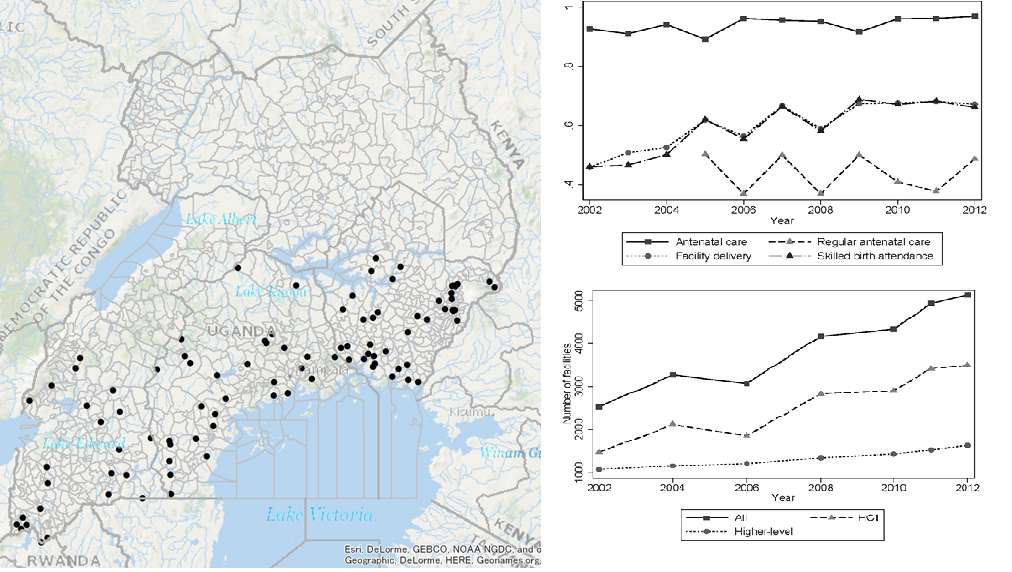
The impact of access to health facilities on maternal care use and health status: Evidence from longitudinal data from Uganda
Maternal and child mortality remains high in developing countries. While timely antenatal care and delivery at formal facility are recommended, many mothers do not use them. This study investigates whether newly established health facilities affect maternal health care use, maternal/child health and travel patterns to facilities. In order to deal with possibly endogenous facility placement, we apply two strategies to the new, decade-long panel data from Uganda: the community-level and mother-level fixed effects models. Several robustness checks support the validity of our results. We find that large facilities and small clinics play differential roles. While openings of large facilities increase the probability of delivery at formal facilities, new clinics increase regular antenatal care usage. The openings of both types of facilities are accompanied by an increased use of less expensive yet more time-consuming transportation modes such as walking, leaving the time to facilities unchanged but reducing the monetary costs of care use. Our heterogeneity analysis further indicates that the effects of both types of facilities on maternal care use are driven by sub-counties which did not initially have those facilities. The impact of a large facility is also strong in sub-counties which initially had clinics. These results imply the importance of universal coverage of health facilities which ensures each locality to have at least one facility suitable for its population size.

The impact of access to health facilities on maternal care use and health status: Evidence from longitudinal data from Uganda

